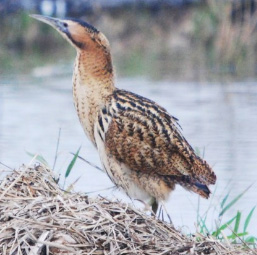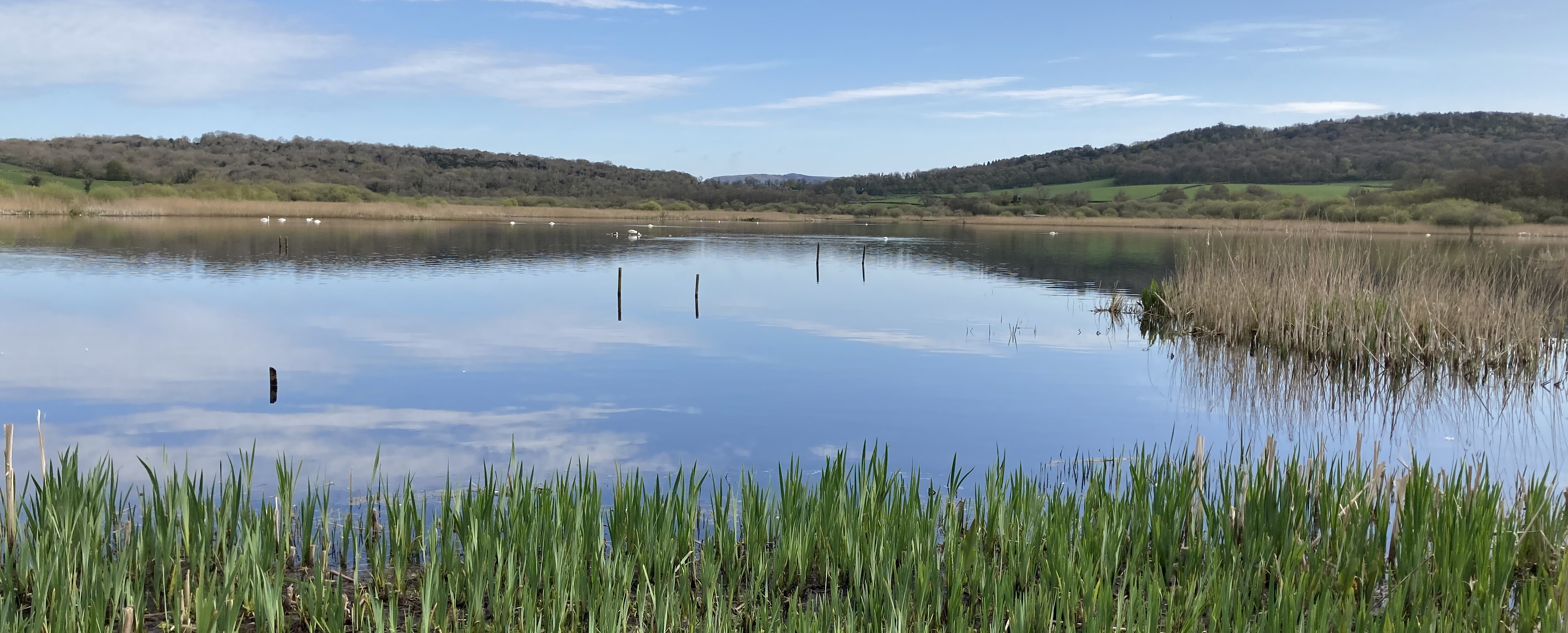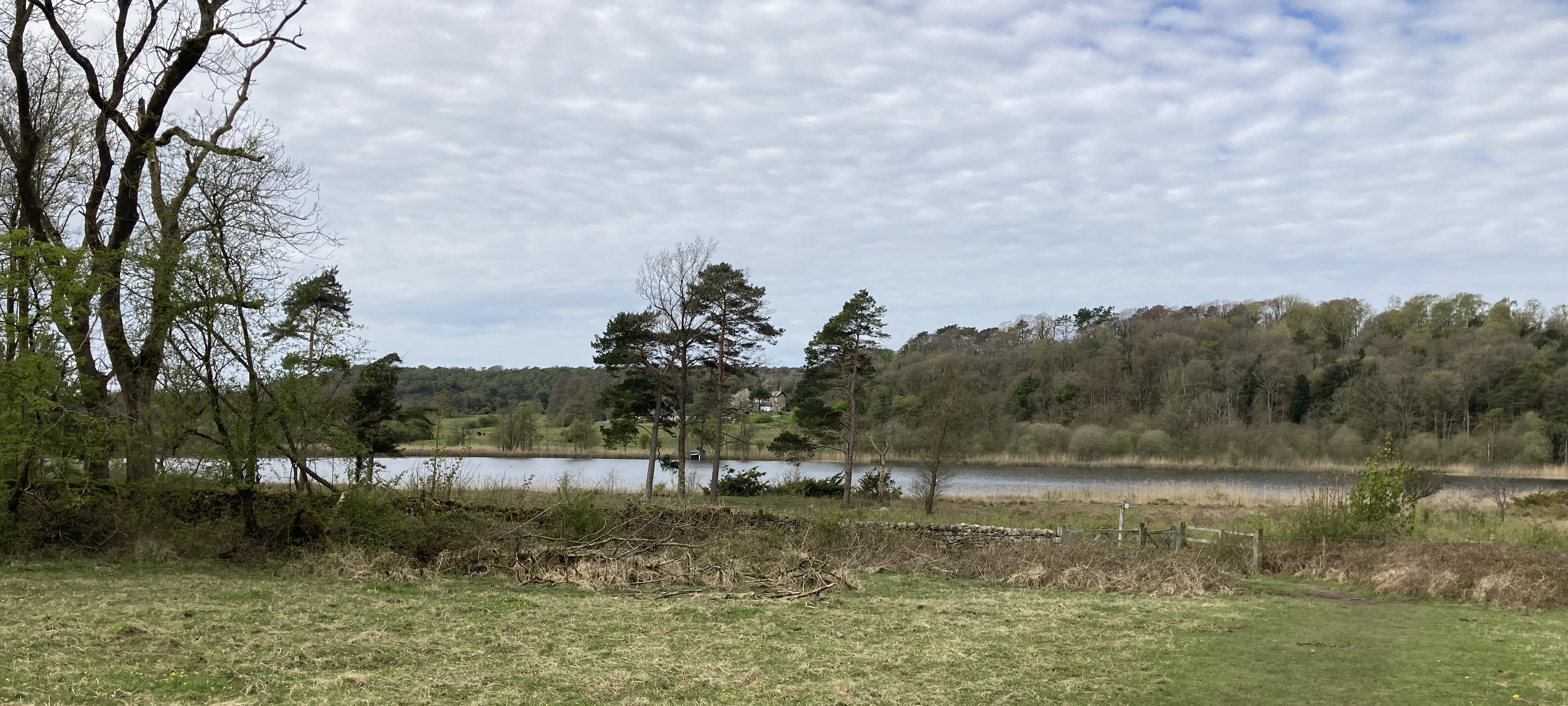
Home
Preamble
Index
Areas
Map
References
Me
Drakkar
Saunterings: Walking in North-West England
Saunterings is a set of reflections based upon walks around the counties of Cumbria, Lancashire and
North Yorkshire in North-West England
(as defined in the Preamble).
Here is a list of all Saunterings so far.
If you'd like to give a comment, correction or update (all are very welcome) or to
be notified by email when a new item is posted - please send an email to johnselfdrakkar@gmail.com.
198. The Bitterns and Marsh Harriers are Booming
We headed straight for the Skytower. We aren’t serious birdwatchers. We don’t call
our binoculars our ‘bins’. We haven’t memorised the RSPB handbook so that
we never have to consult it. We don't wear
regulation camouflage dark green.
The Skytower is the least serious thing
at the Leighton Moss reserve. It is a ten metres or so high platform from which to
oversee most of the lakes and reed beds of the reserve.

Leighton Moss from the Skytower

 Left: Bittern; Right: Marsh harrier (photos from Norfolk Wildlife Trust).
Left: Bittern; Right: Marsh harrier (photos from Norfolk Wildlife Trust).
On the way to the Skytower we had already heard the distant foghorn call of the bittern.
This is the star bird of Leighton Moss, although it is mainly heard rather than seen.
The bittern is a largish bird, like a stout heron, but it is brownish with black spots
and bars to hide within the reed beds. It used to feature in banquet courses but that
isn’t why it died out in England. It dwindled away because the reed beds were reclaimed.
It was lost as a breeding bird in England by the end of the 19th century. When the
Norfolk Broads began to be protected the bittern gradually returned there but then
declined again. At Leighton Moss, after concerted efforts to develop the reed beds
into a condition that bitterns approve of, the bitterns returned to nest in 2018 and
there are now half-a-dozen or so booming males to be heard.
From the Skytower we could see marsh harriers. Every so often one would rise
from the reed beds, flap about a bit like a kite that you can’t quite get up aloft,
and then settle back down in the reeds. Marsh harriers are another success story and
not just for Leighton Moss. As with the bittern, the numbers of breeding marsh harriers
declined in the 19th and early 20th centuries through the drainage of wetlands, the use
of pesticides, and the aim of shooters. Today, the marsh harrier has recovered to about
500 breeding pairs in the UK. Older bird books say that the marsh harrier is a migrant
bird, returning here from Africa in April. However, I understand that our winters are
now so mild that some marsh harriers are content to stay here all winter.
We had come to Leighton Moss with the specific intention to renew acquaintance
with the bitterns and marsh harriers and having achieved that we set off for an amble
around the reserve. We crossed the causeway, passing through the solemn sanctity of the
hide, where nobody was showing any sign of excitement or even interest at anything in view, and left
the reserve on a track towards Leighton Hall, before swinging off north across fields to
Yealand Storrs. It was very quiet and we saw nobody apart from a farmer who was deftly
crooking lambs to administer something.

From the causeway hide
We then followed a broad path across limestone pavement through the trees of Yealand Hall
Allotment, emerging to cross fields to Hawes Water. Numerous sources state
that Hawes Water “is one of only two natural fresh-water lakes in the county, along with
Marton Mere”. Should I infer that the Leighton Moss waters are either not natural or not fresh-water or
not lakes? There are many other bodies of water in Lancashire that are certainly fresh-water.
They aren’t all unnatural, are they? Or are they all too small to be considered lakes?


Left: The path through Yealand Hall Allotment; Right:
Hawes Water.
On the way back to Leighton Moss we passed a Gloucestershire Old Spot, which is a rare breed of
pig (white with black spots). More to the point, we heard another booming bittern in the reeds
at the southern end of Hawes Water. When we mentioned this to an RSPB man at Leighton Moss he
seemed pleased that bitterns (or at least a bittern) had moved on from the carefully-tended reed
beds of Leighton Moss into surrounding reeds.
The successes of the recovery programmes for bittern and marsh harrier (and, of course,
other species such as red kite and blue whale) provide
some welcome good news to counteract the depressing catalogue of environmental failure. But what
are the implications? Is humanity from now on to be the arbiter of which species should be
protected and enabled to survive? Do we have the wisdom for such a role? We can
all feel positive about high-profile species such
as the blue whale. But I read that, for example, two-thirds of bryophytes are in significant
decline. Will we care about those species? Will it matter if we don’t? Will humanity end up
with managed semi-zoos for species that we happen to be fond of? Like Leighton Moss.
Date: April 20th 2024
Start: SD476750, Leighton Moss (Map: OL7)
Route: NE, NW on causeway – Leighton Hall Home Farm – N – Yealand Storrs – W,
NW – Hawes Water – S – Red Bridge – SE across golf course, SW – Leighton Moss
Distance: 4˝ miles; Ascent: 25 metres
Home
Preamble
Index
Areas
Map
References
Me
Drakkar
© John Self, Drakkar Press, 2018-

Top photo: The western Howgills from Dillicar;
Bottom photo: Blencathra from Great Mell Fell




 Left: Bittern; Right: Marsh harrier (photos from Norfolk Wildlife Trust).
Left: Bittern; Right: Marsh harrier (photos from Norfolk Wildlife Trust).



